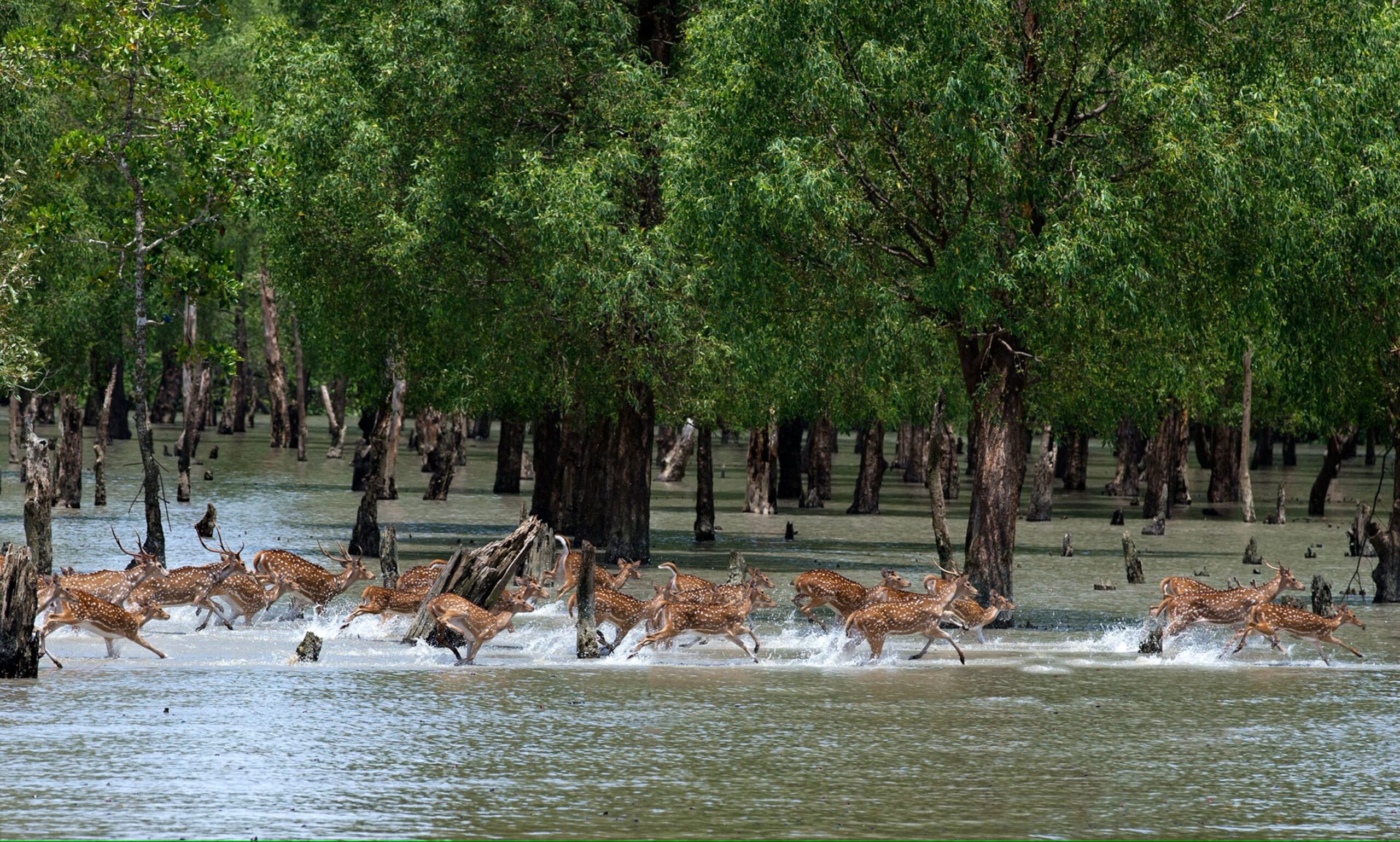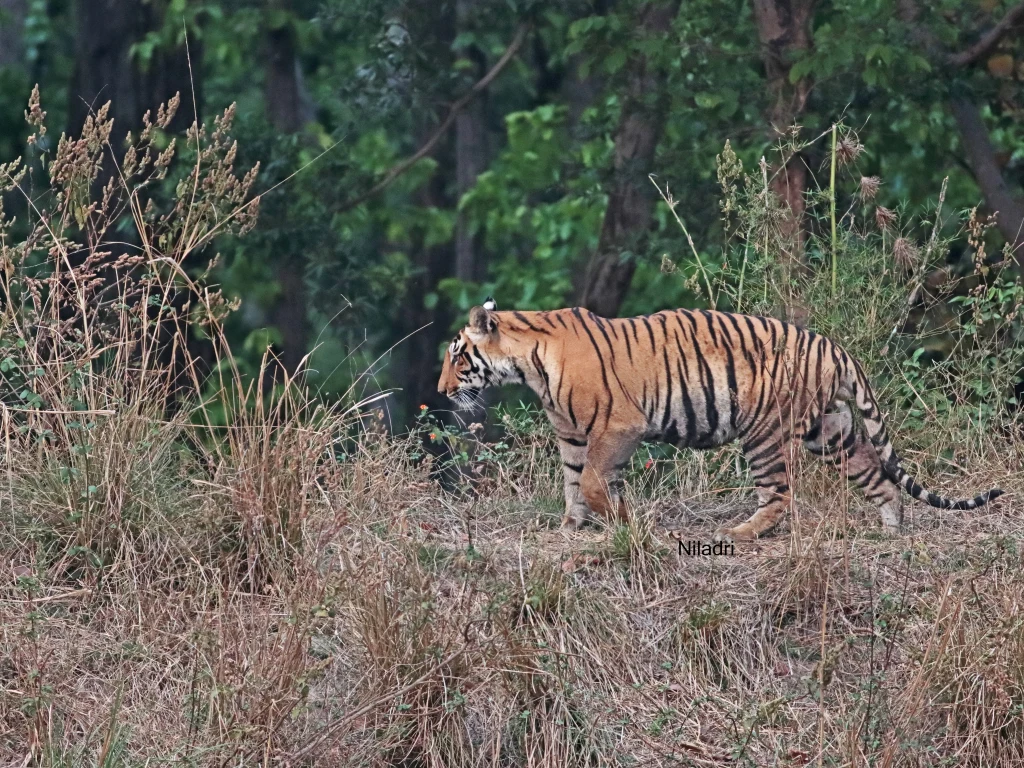Imagine a world where chaos reigns in the jungle because the tiger has lost its way—where it no longer knows how to hunt, how to survive, or how to teach its cubs the ways of the wild. Picture the pandemonium that would ensue if the Chital or Barasingha, creatures of grace and speed, no longer knew how to flee from the tiger’s deadly chase. The very balance of the ecosystem would collapse. Survival in the wild is all about following the ancient rules that have stood the test of time. Survival is about knowing the “what,” “how,” “where,” and crucially, the “why” of existence. The jungle is an unforgiving place, and it demands wisdom and strategy to thrive.
In this narrative, I focus on the tiger—the undisputed ruler of the jungle, much like the apex leaders in any domain. The tiger, with its silent grace and unmatched ferocity, is an excellent metaphor for leadership and survival. Take, for instance, Munna—the largest and oldest tiger of Kanha National Park. At sixteen years of age, Munna stands as the ultimate embodiment of survival and strength. He is not just a survivor; he is a force that strikes fear in others. Even the younger tigers, eager to claim their territory, bow before him after a mere roar. Munna’s reign over his territory is an awe-inspiring testament to the power of experience, strength, and resilience.

Born with the mark of the “CAT” written across his forehead, Munna lives up to this legacy with unmatched prowess. His every movement, every roar, and every battle proves that he is the true king of the jungle. Even at the age of sixteen, Munna remains an indomitable force—fending off challengers and asserting his dominance. This mighty tiger has not only survived but flourished, passing on his exceptional qualities to his cubs, who now dominate other regions of Kanha National Park.
When you venture into the depths of Kanha National Park on a safari, it’s not just the thrill of seeing a tiger that stirs you. It is the palpable aura of Munna’s legacy, the silent understanding that you are in the presence of the jungle’s most formidable creature. The way these tigers move, the arrogance with which they walk past, creates an atmosphere of palpable tension. Their nonchalance is frightening, and their every stride reminds you of the jungle’s brutal beauty. This, my dear friend, is the art of survival—coming out stronger, wiser, and more powerful than before. It’s about passing down this knowledge, leading by example, and ensuring that future generations continue the legacy.
The key lesson here is sustainability. In nature, survival is not just about brute strength or momentary victories. It’s about long-term growth and the ability to adapt, evolve, and pass on knowledge. The tiger’s success lies in its instinct to teach its cubs how to hunt, how to survive, and most importantly, how to thrive in a world that demands perfection. This is not just an animal instinct; it is a fundamental aspect of survival for every creature in the wild. It’s about ensuring the next generation is even more capable than the last.
Sustainability and survival go hand in hand. This truth resonates deeply with me, having spent over three decades observing the behavior of tigers in the wild. Their mastery of survival is something that has guided me in my own life and professional journey. I founded Nature Safari India Pvt Ltd with a singular focus: “Conservation through Tourism.” This mission aligns with the vision of saving the tiger and ensuring that future generations inherit thriving ecosystems, rich with the wildlife that defines our planet’s wilderness. It is through this lens that we must approach the survival of species, ecosystems, and even human society—by ensuring that we educate, adapt, and evolve.
In 2006, I set up one of India’s premier jungle lodges in Kanha National Park, a place where conservation and tourism intersect. This endeavor was born out of a deep love for the wild and the desire to provide a platform for people to experience the untamed beauty of the jungle. Kanha, with its vast and diverse wildlife, is the perfect place to witness the power and majesty of the tiger, and it remains a focal point for my efforts in conservation. The lodge is not just a place for luxury but a sanctuary for those seeking to connect with the natural world and learn about the delicate balance that sustains life in the jungle.

Over the years, the lessons I have learned from the tiger have shaped my approach to business and life. A tiger teaches us that leadership is not about arrogance or forceful dominance. True leadership comes from being able to stand strong, face challenges head-on, and guide others to safety. The tiger doesn’t simply fight to win; it fights to protect its territory, its lineage, and its survival. Similarly, leaders must fight not only for themselves but for the people they lead, the values they stand for, and the legacy they will leave behind.
Sharad Vats, born and raised in New Delhi, was once passionate about playing cricket for India. But it was during a holiday in 1990 that he had his first encounter with a tiger. Little did he know that this singular moment would change the course of his life. This experience ignited a passion for wildlife conservation that has consumed him ever since. As a wildlife photographer, Sharad has spent over thirty years observing the tiger’s behavior, immersing himself in the intricate workings of the jungle. This deep connection to nature led him to become an entrepreneur focused on the conservation of tigers and their habitats.
The tiger, with its unwavering strength and intelligence, holds profound lessons for those in leadership roles. Whether in business or in life, the principles of survival, resilience, and sustainability that the tiger embodies are invaluable. Just as the tiger ensures its survival by teaching the next generation, we too must ensure that we educate and empower those who follow us, preparing them for the challenges ahead.
If you are fascinated by the lessons of the tiger and wish to delve deeper into the wisdom that can be learned from its behavior, I invite you to explore my latest book on management and leadership skills. Available now on Amazon, it provides insights drawn from my years of observing the tiger and applying those lessons to both business and personal growth.
Related Posts:
– Wild Earth Safari in India: India’s vast and diverse landscapes are home to a rich array of wildlife. The national parks of India, such as Kanha and Jim Corbett, provide unparalleled opportunities for safari adventures, where visitors can witness the majesty of tigers in their natural habitat.
– Best Season for Tiger Safari in India: The best time to embark on a tiger safari in India is during the winter months, from November to March. During this period, the cooler temperatures make wildlife sightings more frequent, and the dense forests are easier to explore.
– Post-COVID Tiger Safaris in India: The COVID-19 pandemic had a significant impact on wildlife tourism. However, as the world recovers, tiger safaris in India are beginning to see a resurgence, with many tourists eager to experience the thrill of spotting these majestic creatures in the wild once again.

